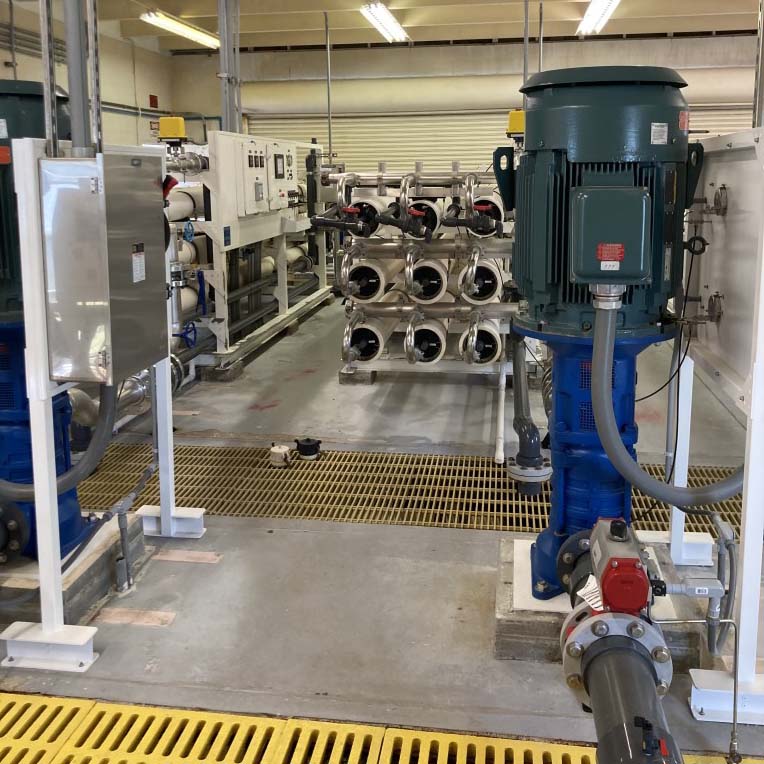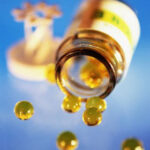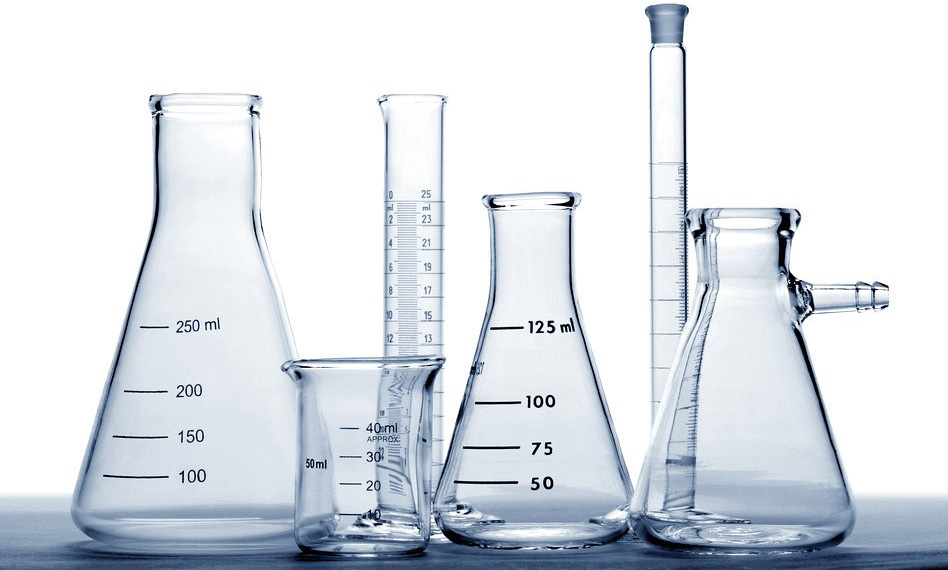GIWA’s 2021 Water Quality Report
A Message From GIWA
Gasparilla Island Water Association, Inc. (GIWA) is pleased to present to you this year’s Annual Drinking Water Quality Report. This report is designed to inform you about the quality water and related services we deliver to you every day. As always, we are committed to ensuring the quality of your water. GIWA is pleased to report that our drinking water meets all Federal and State requirements. GIWA produced 414 million gallons of quality drinking water in 2021.

Your water source is from groundwater wells that draw from both surficial and middle intermediate aquifers. Approximately 81% of your water comes from brackish water drawn from the middle intermediate aquifers that is treated by our Reverse Osmosis plant. The remaining 19% is shallow well water drawn from the surficial aquifer that is treated by a color removal plant. The treated water from both plants is blended and phosphoric acid added to it for corrosion control. It is then disinfected with chloramines before pumping to the water distribution system.
GIWA also purchases water from Charlotte County Utilities (CCU) when the demand for water exceeds production capabilities or when our plant is out of service for maintenance. CCU is connected to the Peace River Regional Water Treatment Plant. Only 1.2 million gallons of water was purchased from CCU in 2021.
Members are encouraged to be informed about their water utility. If you have any questions about this report or about GIWA, please contact Ronald Bolton, Executive Director at 941-964-2423. GIWA’s Board meetings are held at 8:30 a.m. at our office (1700 East Railroad Avenue, Boca Grande) on the first Wednesday of each month.
This report will be mailed to customers upon request and is also available at GIWA’s office.
What Can I Expect to Find in My Drinking Water?

The sources of drinking water (both tap water and bottled water) include rivers, lakes, streams, ponds, reservoirs, springs, and wells. As water travels over the surface of the land or through the ground, it dissolves naturally occurring minerals and, in some cases, radio-active material, and can pick up substances resulting from the presence of animals or from human activity.
Contaminants that may be present in source water include:
- Microbial contaminants, such as viruses and bacteria, which may come from sewage treatment plants, septic systems, agricultural livestock operations, and wildlife.
- Inorganic contaminants, such as salts and metals, which can be naturally-occurring or result from urban stormwater runoff, industrial or domestic wastewater discharges, oil and gas production, mining, or farming.
- Pesticides and herbicides, which may come from a variety of sources such as agriculture, urban stormwater runoff, and residential uses.
- Organic chemical contaminants, including synthetic and volatile organic chemicals, which are by-products of industrial processes and petroleum production, and can also come from gas stations, urban stormwater runoff, and septic systems.
- Radioactive contaminants, which can be naturally occurring or be the result of oil and gas production and mining activities.
To ensure that tap water is safe to drink, the EPA prescribes regulations, which limit the amount of certain contaminants in water provided by public water systems. The Food and Drug Administration (FDA) regulations establish limits for contaminants in bottled water, which must provide the same protection for public health.
Drinking water, including bottled water, may reasonably be expected to contain at least small amounts of some contaminants. The presence of contaminants does not necessarily indicate that the water poses a health risk. More information about contaminants and potential health effects can be obtained by calling the Environmental Protection Agency’s Safe Drinking Water Hotline at 1-800-426-4791.

Please DO NOT FLUSH your unused/unwanted medications down toilets or sink drains. For more information on proper disposal, please visit the Florida Department of Environmental Protection website.
How do I Read This Report?

GIWA routinely monitors for contaminants in your drinking water according to Federal and State laws, rules, and regulations. Except where indicated otherwise, this report is based on the results of our monitoring for the period of January 1 to December 31, 2021. Data obtained before January 1, 2021, and presented in this report is from the most recent testing done in accordance with the laws, rules, and regulations. In the table below, you may find unfamiliar terms and abbreviations. To help you better understand these terms we’ve provided the following definitions:
Action Level (AL): The concentration of a contaminant which, if exceeded, triggers treatment or other requirements that a water system must follow.
Maximum Contaminant Level or MCL: The highest level of a contaminant that is allowed in drinking water. MCLs are set as close to the MCLGs as feasible using the best available treatment technology.
Maximum Contaminant Level Goal or MCLG: The level of a contaminant in drinking water below which there is no known or expected risk to health. MCLGs allow for a margin of safety.
Maximum Residual Disinfectant Level or MRDL: The highest level of a disinfectant allowed in drinking water. There is convincing evidence that addition of a disinfectant is necessary for control of microbial contaminants.
Maximum Residual Disinfectant Level Goal or MRDLG: The level of a drinking water disinfect-ant below which there is no known or expected risk to health. MRDLGs do not reflect the bene-fits of the use of disin-fectants to control mi-crobial contaminants.
Parts per billion (ppb): one part by weight of analyte to 1 billion parts by weight of the water sample.
Parts per million (ppm): one part by weight of analyte to 1 million parts by weight of the water sample.
Gasparilla Island Water Association, Inc.
2021 Annual Drinking Water Quality Test Results
Inorganic Contaminants
| Contaminant and Unit of Measurement | Dates of Sampling (mo/yr) | MCL Violation Y/N | Level Detected | Range of Results | MCLG | MCL | Likely Source of Contamination |
|---|---|---|---|---|---|---|---|
| Barium (ppm) | 4/20 | No | .0072 | 2 | 2 | Discharge of drilling wastes; discharge from metal refineries; erosion of natural deposits | |
| Cyanide (ppb) | 5/20 | No | 4.96 | 200 | 200 | Discharge from steel/metal factories; discharge from plastic and fertilizer factories | |
| Nitrate (as Nitrogen) (ppm) | 4/20 | No | .029 | 10 | 10 | Runoff from fertilizer use; leaching from septic tanks, sewage; erosion of natural deposits | |
| Sodium (ppm) | 4/20 | No | 65.7 | N/A | 160 | Salt water intrusion, leaching from soil |
Stage 1 Disinfectants and Disinfection By Products
| Disinfectant or Contaminant and Unit of Measurement | Dates of Sampling (mo/yr) | MRDL Violation Y/N | Level Detected | Range of Results | MRDLG | MRDL | Likely Source of Contamination |
|---|---|---|---|---|---|---|---|
| Chlorine and Chloramines (ppm) | Monthly 2021 | No | 2.2 | .7 – 3.2 | 4 | 4 | Water additive used to control microbes |
Stage 2 Disinfectants and Disinfection By-Products
| Contaminant and Unit of Measurement | Dates of Sampling (mo/yr) | MCL Violation Y/N | Level Detected | Range of Results | MCLG | MCL | Likely Source of Contamination |
|---|---|---|---|---|---|---|---|
| Haloacetic Acids (HAA5) (ppb) | 09/21 | No | 32 | 28 – 32 | N/A | 60 | By-product of drinking water disinfection |
| Total Trihalomethanes (TTHM) (ppb) | 09/21 | No | 58 | 47 – 58 | N/A | 80 | By-product of drinking water disinfection |
Lead and Copper (Tap Water)
| Contaminant and Unit of Measurement | Dates of Sampling (mo/yr) | AL Exceeded Y/N | 90th Percentile Result | No. of Sampling Sites Exceeding the AL | MCLG | AL (Action Level) | Likely Source of Contamination |
|---|---|---|---|---|---|---|---|
| Copper (tap water) (ppm) | 08/20 & 09/20 | No | .072 | 0 | 1.3 | 1.3 | Corrosion of household plumbing systems; erosion of natural deposits; leaching from wood preservatives |
| Lead (tap water) (ppb) | 08/20 & 09/20 | No | 2.3 | 0 | 0 | 15 | Corrosion of household plumbing systems; erosion of natural deposits |
We are pleased to report that our drinking water meets all Federal and State requirements.
Source Water Assessment Plan
In 2021 the Florida Department of Environmental Protection (FDEP) performed a Source Water Assessment on our system. The assessment was conducted to provide information about any potential sources of contamination near our wells. The assessment results are available on the FDEP Source Water Assessment and Protection Program website at www.dep.state.fl.us/swapp.
There are five potential sources of contamination identified for our system with levels of concerns for contamination ranging from low to moderate. The potential sources are concrete plants operating in the area that have both industrial wastewater permits (low) and fuel storage tanks (moderate). Additionally, GIWA’s water treatment facility has fuel storage. Our permits include conditions that are designed to protect groundwater and are monitored by FDEP to insure compliance.
There are over 20,000 petroleum storage tanks (both underground and aboveground) in Florida. Since Florida relies on groundwater for approximately 92 percent of its drinking water needs, FDEP has a very active petroleum contamination prevention and cleanup program and some of the most stringent rules in the Country.
Additionally, Charlotte County has a Wellhead Protection Ordinance in place that is designed to protect our water supply. This ordinance requires anyone wishing to conduct business within 1500’ of our wells to enter into an agreement with GIWA which contains specific conditions to protect our water supply from contamination as a result of their operation.
Lead in Drinking Water
If present, elevated levels of lead can cause serious health problems, especially for pregnant women and young children. Lead in drinking water is primarily from materials and components associated with service lines and home plumbing. GIWA is responsible for providing high quality drinking water, but cannot control the variety of materials used in plumbing components. When your water has been sitting for several hours, you can minimize the potential for lead exposure by flushing your tap for 30 seconds to 2 minutes before using water for drinking or cooking. If you are concerned about lead in your water, you may wish to have your water tested. Information on lead in drinking water, testing methods, and steps you can take to minimize exposure is available from the Safe Drinking Water Hotline or at http://www.epa.gov/safewater/lead.
People with Special Concerns
Some people may be more vulnerable to contaminants in drinking water than the general population. Immunocompromised persons such as persons with cancer undergoing chemotherapy, persons who have undergone organ transplants, people with HIV/AIDS or other immune system disorders, some elderly, and infants can be particularly at risk from infections. These people should seek advice about drinking water from their health care providers. EPA/Center for Disease Control (CDC) guidelines on appropriate means to lessen the risk of infection by Cryptosporidium and other microbiological contaminants are available from the Safe Drinking Water Hotline (800-426-4791).

